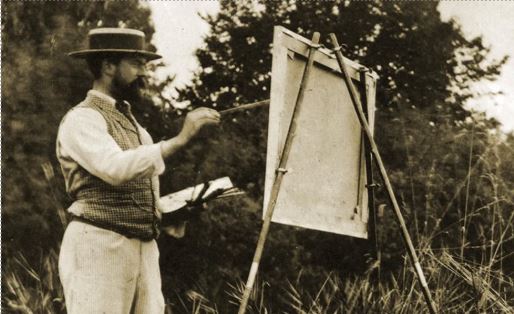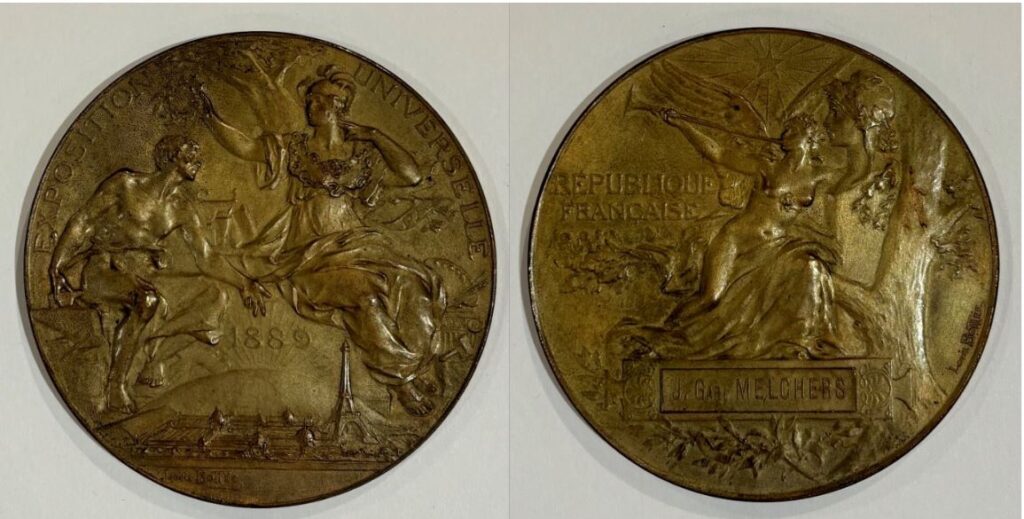Did Gari Melchers (1860-1932) know fellow artist John Singer Sargent (1856-1925)? The American expats were, after all, born only four years apart and lived parallel lives and moved in similar circles. In a 1918 letter to Sargent, Melchers admits to knowing him “very slightly” and that it was “years since you and I last met.” Although they were not close, the two men certainly had a lot in common.
Both artists were quite prolific, spoke several languages, and studied in Paris.


They both enjoyed painting en plein air.


At the 1886 Paris Salon, Gari Melchers received an honorable mention for his monumental painting The Sermon, while Sargent, two years earlier, created a scandal with his portrait now known as Madame X.



At the 1889 Paris Exposition, the artists each received a Grand Prize medal for American Painting for their collective showing. Melchers’ paintings featured scenes of the Dutch working class whereas Sargent highlighted his fashionable female portraits.



A Parisian art critic was quick to point out the reason for their success: “…Mr. Sargent and Mr. Melchers, who won medals of honor, are in reality half-Parisians.” According to one art critic, Sargent had no peer at the Paris Expo as a portrayer of female sitters.
Gari Melchers’ Portrait of Mrs. John W. Garrett in Spanish Costume, 1926, (left) was based in pose and conception on the earlier Sargent portrait of a Spanish dancer, La Carmencita, 1890 (right).

Both artists were commissioned to paint President Theodore Roosevelt while he was in office. Sargent, however, holds the honor of painting the president’s official White House portrait.
Gari Melchers was particularly aware of the importance of Painting a President. He wrote to his wife, Corinne, that “This painting the President is rather anxious business.” He added, “Everybody in the White House is expecting me to outdo the portrait of Sargent. May I not disappoint them.”
For his part, Sargent lamented that “Every time I paint a portrait, I lost a friend.”
Which portrait do you prefer? For what it’s worth, the president was pleased with both portraits and thought it fitting that they were painted by American artists.

Additional Reading
Paris 1889: American Artists at the Universal Exposition, by Annette Blaugrund, Pennsylvania Academy of the Fine Arts, Philadelphia, PA, 1989

This is interesting. Thank you!
Very interesting comparisons. I like Melchers’ subject matter – common people, for the most part.